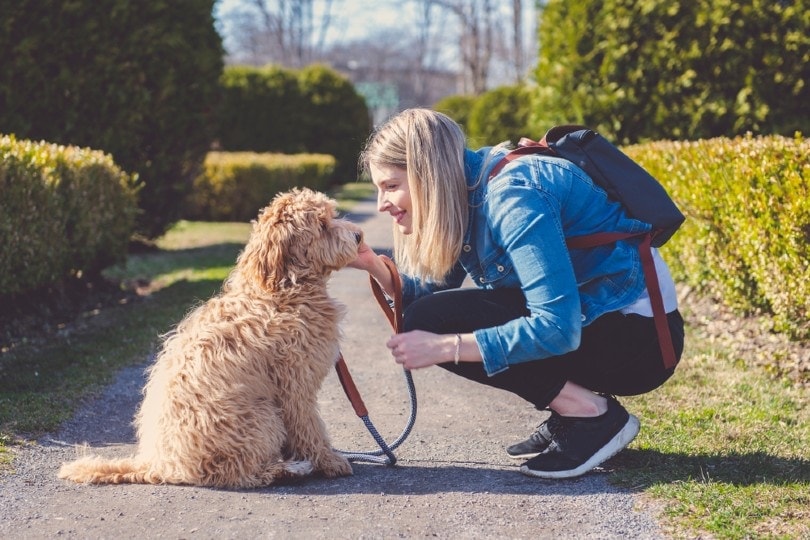My Dog Has Something in Their Eye: Here’s What to Do

Updated on
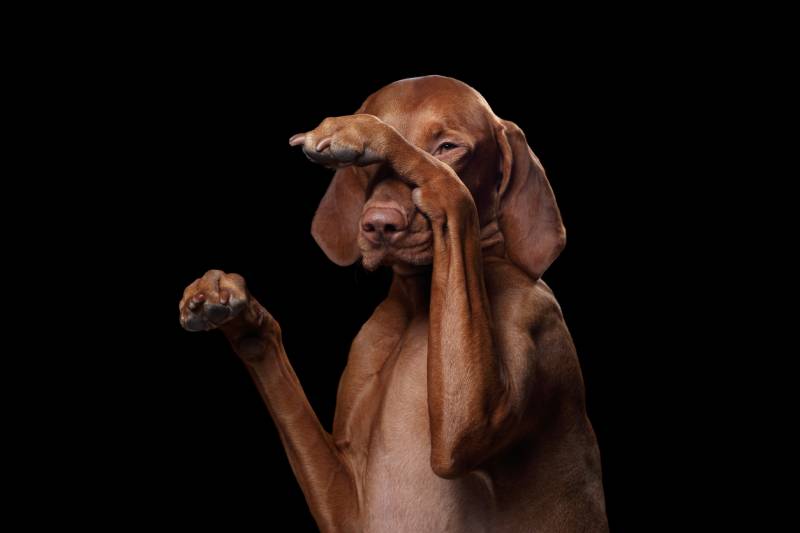
Dogs are susceptible to eye irritations since they explore their environment differently than humans. They put their noses to the ground, sniff different objects and even dig when need be, which exposes them to vegetation, floating objects, and sharp items, which can cause eye irritation. Therefore, it is only natural that something can get lodged in their eyes at one point in their lives.
In most cases, you can easily get rid of foreign objects in a dog’s eye with a few home-based first-aid tips. However, in more severe cases, you might have to take your dog to the vet. But before you do that, here we cover what to do as an emergency response.
Read on to learn more.
How to Tell Your Dog Has Something Stuck in Their Eye
In some instances, it might be easy to tell if something is stuck in your dog’s eyes, while sometimes it might not be as obvious. So, you might have to physically examine your dog’s eyes for signs of irritation. Depending on the size of the foreign body, if it is only 1 or 2 millimeters big, the only way to actually see it is with special equipment that your vet or veterinary ophthalmologist has.
Keep in mind that dogs feature a third eyelid which is located at the inner corner of the eye, closest to the nose. Sometimes the third eyelid can completely cover the eyeball, making it look like that part of the eye is completely gone.
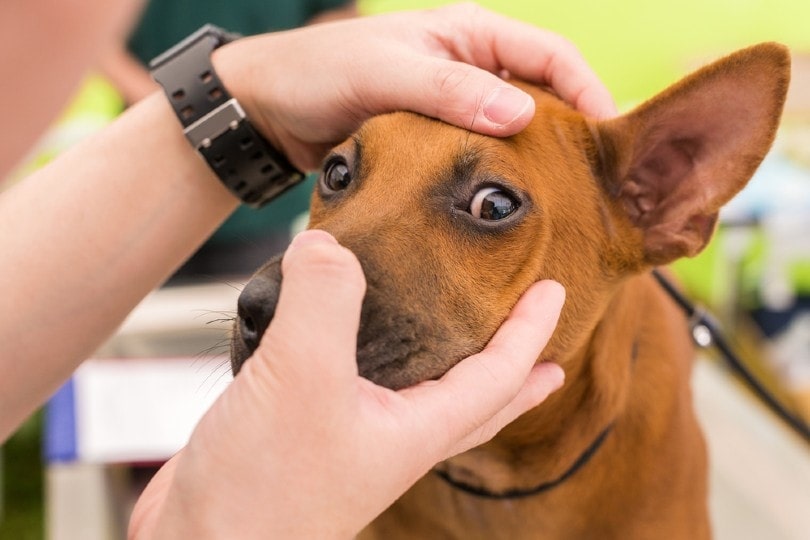
Besides the protective mechanism function, the third eyelid can also help indicate signs of irritation in the eye. If it looks red and is swollen, it means it is inflamed, and you shouldn’t touch it. If the third eyelid is up, it means it is either inflamed, your dog’s eye is feeling very painful, or a foreign body is lodged behind it.
- Sudden onset signs
- Squinting and winking the eyes more than usual
- Pawing or scratching at the affected eye
- Excessive tears
- Red and swollen eyelids
- Abnormal ocular discharge like pus 1
- Your dog appears lethargic and uncomfortable
- Whites of the eye look red
- You can visibly see a foreign object in the eyes
What to Do When a Dog Has Something in His Eye
Before you attempt to remove the object yourself, reach out to your vet. Describe how the eye looks and what you think might have gotten stuck. The vet may advise you to bring the dog in to have a professional help out.
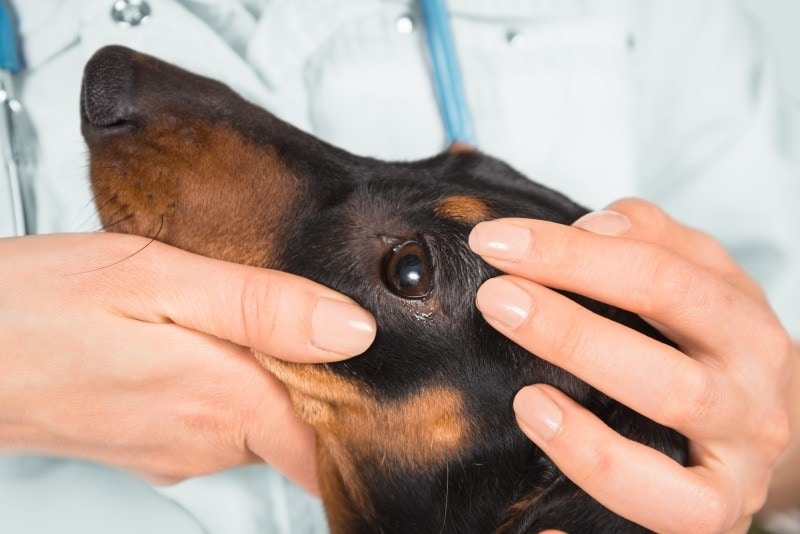
However, if your vet feels you can try to do this at home and your dog is cooperating, you must be well prepared for the procedure.
- A pair of sterile gloves
- Sterile water
- A syringe
- Sterile eye lubricant
- A light source
- An Elizabeth collar or a cone
Step-by-Step Guide for Dislodging Foreign Objects From Your Dog’s Eyes
1. Get the Dog Ready for the Exercise
Ensure your dog is in a comfortable position. Do not spook them, but rather, approach them slowly while using a reassuring voice tone. You can prevent further injury to the eye by restraining the dog. Ensure that the paws are held tightly so that they can’t use their claws to scratch you or themselves. This is especially important on the front paw located on the same side as the affected eye.
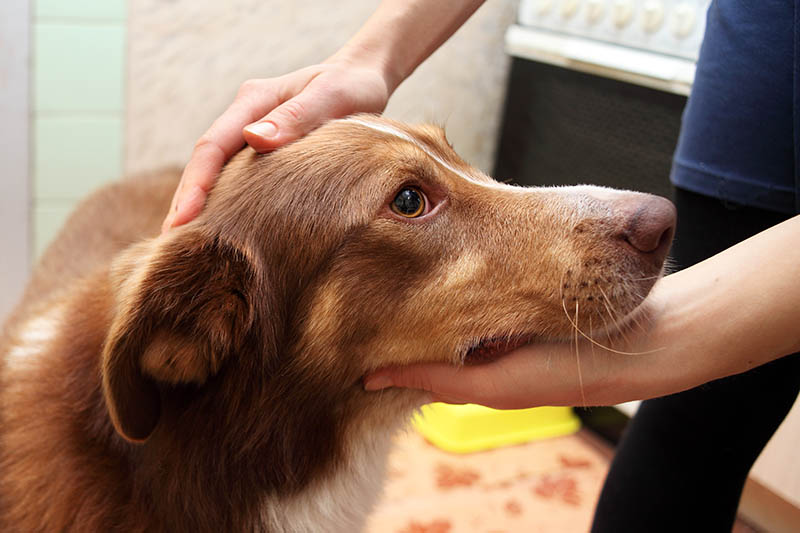
2. Ready the Sterile Water and Syringe
Add the sterile water into the syringe so that you don’t have to do it while trying to restrain your dog. You want to ensure the water is ready before the dog notices and starts moving around, making it harder to get the job done.
3. Hold Your Dog Steady
Most dogs are not exactly excited to have water pushed into their eyes, and they may show some resistance with the first drop. So, you have to hold them steady via their head while ensuring the affected eye is accessible. But make sure you are gentle. If the dog is stressed, you may need to stop for a few minutes, or consider taking them to the vet to have the procedure done by professionals.
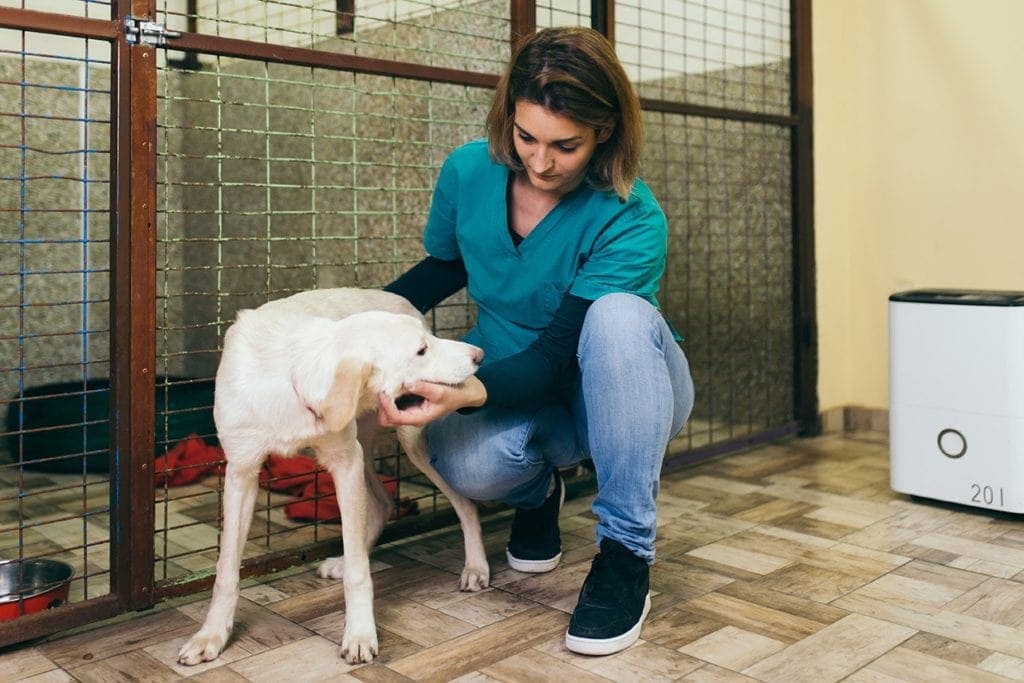
4. Squirt Sterile Water into the Dog’s Eye
Gently open your dog’s eyes and slowly add the liquid into the affected eye from a distance of approximately 2 to 3 inches high, letting the water run through their eyes to flush out any possible debris or foreign material. You can very gently try to keep the eyes open using your thumb and index finger to prevent them from blinking the water away. This step may be enough to remove the dislodged object. However, don’t push too hard on the syringe, as it may further hurt your dog’s eye.
5. Confirm Whether the Operation Has Been Successful
Use the light source to check whether the object has been dislodged from your dog’s eyes. Do not directly shine the light into the eyes because it can be very uncomfortable for your dog. Instead, shine it at an angle that allows you to see without making your dog uneasy. If the object is not there anymore, your dog is likely to be a lot more comfortable by then.
If the dislodged object is still partially stuck, repeat the flushing procedure. However, do not do it more than twice because it can irritate your dog’s eyes further.
If you manage to get the foreign object out, give your dog a treat. If you reward your dog for cooperating during the procedure, they are likely to be more eager to cooperate in the future.
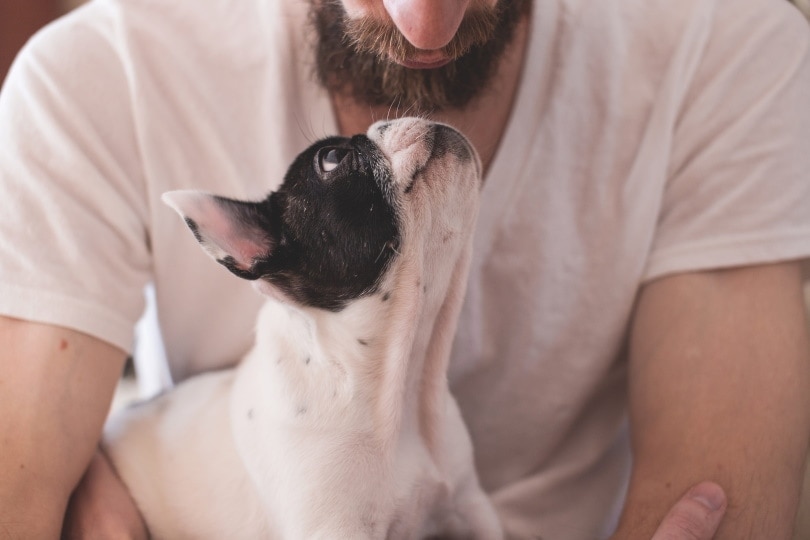
When to Call Your Vet
If the Object Remains Even After Flushing Your Dog’s Eyes
The more you try to dislodge the item, the more likely you will be irritating your dog’s eye. Also, the longer the item remains in the eye, the more damage it is likely to cause. So, it’s best to let a vet take charge after two failed attempts.
Get them a cone or an Elizabeth collar. The two serve the same purpose of preventing the dog from scratching or pawing at the affected eye and preventing further damage, at least until you get medical intervention.
Medical intervention doesn’t necessarily mean that you have to take your dog to an operating room. Your vet might recommend topical analgesics eye drops to get rid of the object.
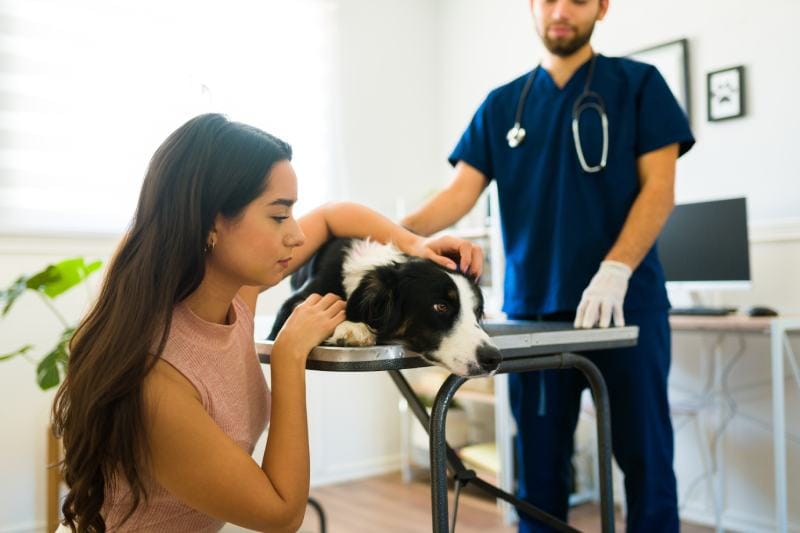
If You Are Uncomfortable Dislodging the Foreign Object Yourself
It’s perfectly alright if you are a bit squeamish to carry out the procedure yourself. Most people are anxious to dislodge the object because they are afraid to hurt their dog further. So, if you are not ready or willing, a vet would be a safe option.
Conclusion
Eye injuries in dogs are common because canines frequently put their faces into different places as they try to explore. So, at one point, they will inevitably have a foreign object stuck in their eye. Usually, this is not a point of concern because after you contact your vet and get the thumbs up, you can try to dislodge the item using straightforward first aid tips as we have listed above.
However, before you attempt any first aid procedure, make sure you are prepared with the necessary tools. Also, if the object doesn’t dislodge after two trials, do not do it further because the experience is very uncomfortable for dogs and might cause further damage. At this point, call your local vet.
Featured Image Credit: Ivanova N, Shutterstock




